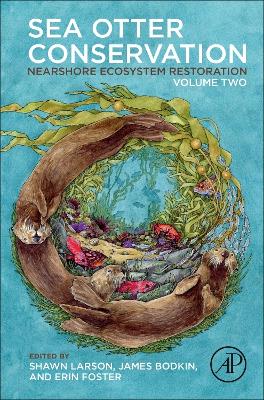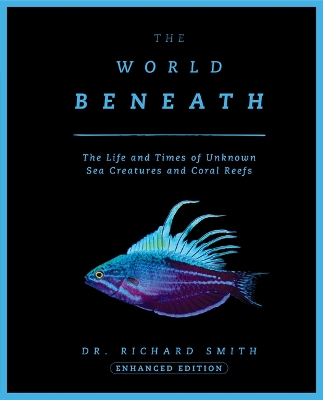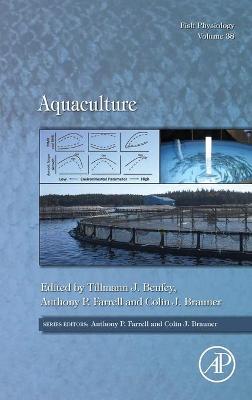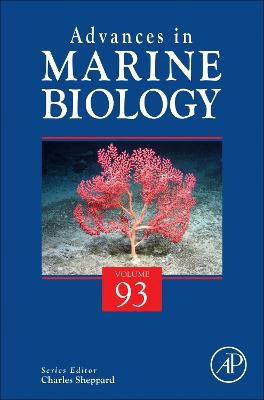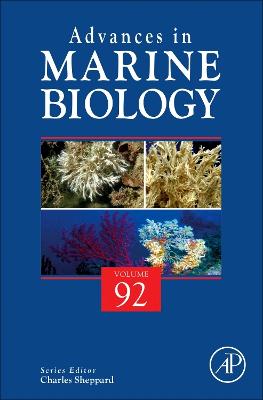Conservation Physiology for the Anthropocene - Issues and Applications
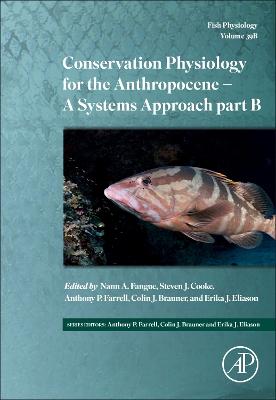 portes grátis
portes grátis
Conservation Physiology for the Anthropocene - Issues and Applications
Eliason, Erika; Fangue, Nann A.; Brauner, Colin; Farrell, Anthony; Cooke, Steven J.
Elsevier Science Publishing Co Inc
11/2022
668
Dura
Inglês
9780128242681
15 a 20 dias
Descrição não disponível.
Preface
Nann A. Fangue, Steven J. Cooke, Anthony P. Farrell, Colin J. Brauner and Erika J. Eliason
1. Using physiology to recover imperiled smelt species
Yuzo R. Yanagitsuru, Brittany E. Davis, Melinda R. Baerwald, Ted R. Sommer and Nann A. Fangue
2. Conservation aquaculture-A sturgeon story
W. Gary Anderson, Andrea Schreier and James A. Crossman
3. Using ecotoxicology for conservation: From biomarkers to modeling
Gudrun De Boeck, Essie Rodgers and Raewyn M. Town
4. Consequences for fisheries in a multi-stressor world
Shaun S. Killen, Jack Hollins, Barbara Koeck, Robert J. Lennox and Steven J. Cooke
5. Environmental stressors in Amazonian riverine systems
Adalberto Luis Val, Rafael Mendonca Duarte, Derek Campos and Vera Maria Fonseca de Almeida-Val
6. Fish response to environmental stressors in the Lake Victoria Basin ecoregion
Lauren J. Chapman, Elizabeth A. Nyboer and Vincent Fugere
7. Coral reef fishes in a multi-stressor world
Jodie L. Rummer and Bjoern Illing
8. Restoration physiology of fishes: Frontiers old and new for aquatic restoration
Katherine K. Strailey and Cory D. Suski
9. A conservation physiological perspective on dam passage by fishes
Scott G Hinch, Nolan N Bett and Anthony P. Farrell
10. Invasive species control and management: The sea lamprey story
Michael P. Wilkie, Nicholas S. Johnson and Margaret F. Docker
11. Conservation physiology of fishes for tomorrow: Successful conservation in a changing world and priority actions for the field
Lisa M. Komoroske and Kim Birnie-Gauvin
Nann A. Fangue, Steven J. Cooke, Anthony P. Farrell, Colin J. Brauner and Erika J. Eliason
1. Using physiology to recover imperiled smelt species
Yuzo R. Yanagitsuru, Brittany E. Davis, Melinda R. Baerwald, Ted R. Sommer and Nann A. Fangue
2. Conservation aquaculture-A sturgeon story
W. Gary Anderson, Andrea Schreier and James A. Crossman
3. Using ecotoxicology for conservation: From biomarkers to modeling
Gudrun De Boeck, Essie Rodgers and Raewyn M. Town
4. Consequences for fisheries in a multi-stressor world
Shaun S. Killen, Jack Hollins, Barbara Koeck, Robert J. Lennox and Steven J. Cooke
5. Environmental stressors in Amazonian riverine systems
Adalberto Luis Val, Rafael Mendonca Duarte, Derek Campos and Vera Maria Fonseca de Almeida-Val
6. Fish response to environmental stressors in the Lake Victoria Basin ecoregion
Lauren J. Chapman, Elizabeth A. Nyboer and Vincent Fugere
7. Coral reef fishes in a multi-stressor world
Jodie L. Rummer and Bjoern Illing
8. Restoration physiology of fishes: Frontiers old and new for aquatic restoration
Katherine K. Strailey and Cory D. Suski
9. A conservation physiological perspective on dam passage by fishes
Scott G Hinch, Nolan N Bett and Anthony P. Farrell
10. Invasive species control and management: The sea lamprey story
Michael P. Wilkie, Nicholas S. Johnson and Margaret F. Docker
11. Conservation physiology of fishes for tomorrow: Successful conservation in a changing world and priority actions for the field
Lisa M. Komoroske and Kim Birnie-Gauvin
Este título pertence ao(s) assunto(s) indicados(s). Para ver outros títulos clique no assunto desejado.
3-Trifluoromethyl-4-nitrophenol; Abiotic stressors; Acclimation; Adaptation; Amazonian waters; Anaerobiosis; Anthropogenic effects; Anthropogenic threats; Aquatic biota; Aquatic conservation; Aquatic invasive species; Aquatic restoration; Aquatic surface respiration; Averse outcome pathways; Biomarkers; Biomonitoring; Biotelemetry; Biotic stressors; Bottom-up/top-down approach; Carryover effects; Catch-and-release; Climate change; Commercial fishing; Conservation aquaculture; Conservation physiology; Contaminants; Critical oxygen tension; Critical thermal maximum; Dam passage; Deforestation; Delta smelt; Disease; Diversity; East Africa; Ecotoxicology; Energetics; Environmental realism; Environmental stressors; Experimental approaches; Fish diversity; Fish evolution; Fisheries-induced evolution; Freshwater; Genotype; Gill surface area; Global warming; Habitat degradation; Habitat quality; Hatchery; Hypoxia; Inclusivity; Injury; Inter- and intraspecific sensitivity; Laurentian Great Lakes; Life history; Management; Mechanisms; Meta-analyses; Meta-analysis; Metabolic rate; Migratory fish; Monitoring; Ocean acidification; Ocean deoxygenation; Ocean warming; Parasites; Phenotype; Phenotypic plasticity; Physiological adaptations; Pollution; Predator-prey interaction; Priority actions; Recreational fishing; Regulated rivers; Reintroduction; Risk assessment and modeling; Salinity; San Francisco Estuary; Sea lamprey control; Streamside; Stress; Sturgeon; Supplementation; Syntheses; Temperature; Thermal tolerance; Trait-based approaches; Turbidity
Preface
Nann A. Fangue, Steven J. Cooke, Anthony P. Farrell, Colin J. Brauner and Erika J. Eliason
1. Using physiology to recover imperiled smelt species
Yuzo R. Yanagitsuru, Brittany E. Davis, Melinda R. Baerwald, Ted R. Sommer and Nann A. Fangue
2. Conservation aquaculture-A sturgeon story
W. Gary Anderson, Andrea Schreier and James A. Crossman
3. Using ecotoxicology for conservation: From biomarkers to modeling
Gudrun De Boeck, Essie Rodgers and Raewyn M. Town
4. Consequences for fisheries in a multi-stressor world
Shaun S. Killen, Jack Hollins, Barbara Koeck, Robert J. Lennox and Steven J. Cooke
5. Environmental stressors in Amazonian riverine systems
Adalberto Luis Val, Rafael Mendonca Duarte, Derek Campos and Vera Maria Fonseca de Almeida-Val
6. Fish response to environmental stressors in the Lake Victoria Basin ecoregion
Lauren J. Chapman, Elizabeth A. Nyboer and Vincent Fugere
7. Coral reef fishes in a multi-stressor world
Jodie L. Rummer and Bjoern Illing
8. Restoration physiology of fishes: Frontiers old and new for aquatic restoration
Katherine K. Strailey and Cory D. Suski
9. A conservation physiological perspective on dam passage by fishes
Scott G Hinch, Nolan N Bett and Anthony P. Farrell
10. Invasive species control and management: The sea lamprey story
Michael P. Wilkie, Nicholas S. Johnson and Margaret F. Docker
11. Conservation physiology of fishes for tomorrow: Successful conservation in a changing world and priority actions for the field
Lisa M. Komoroske and Kim Birnie-Gauvin
Nann A. Fangue, Steven J. Cooke, Anthony P. Farrell, Colin J. Brauner and Erika J. Eliason
1. Using physiology to recover imperiled smelt species
Yuzo R. Yanagitsuru, Brittany E. Davis, Melinda R. Baerwald, Ted R. Sommer and Nann A. Fangue
2. Conservation aquaculture-A sturgeon story
W. Gary Anderson, Andrea Schreier and James A. Crossman
3. Using ecotoxicology for conservation: From biomarkers to modeling
Gudrun De Boeck, Essie Rodgers and Raewyn M. Town
4. Consequences for fisheries in a multi-stressor world
Shaun S. Killen, Jack Hollins, Barbara Koeck, Robert J. Lennox and Steven J. Cooke
5. Environmental stressors in Amazonian riverine systems
Adalberto Luis Val, Rafael Mendonca Duarte, Derek Campos and Vera Maria Fonseca de Almeida-Val
6. Fish response to environmental stressors in the Lake Victoria Basin ecoregion
Lauren J. Chapman, Elizabeth A. Nyboer and Vincent Fugere
7. Coral reef fishes in a multi-stressor world
Jodie L. Rummer and Bjoern Illing
8. Restoration physiology of fishes: Frontiers old and new for aquatic restoration
Katherine K. Strailey and Cory D. Suski
9. A conservation physiological perspective on dam passage by fishes
Scott G Hinch, Nolan N Bett and Anthony P. Farrell
10. Invasive species control and management: The sea lamprey story
Michael P. Wilkie, Nicholas S. Johnson and Margaret F. Docker
11. Conservation physiology of fishes for tomorrow: Successful conservation in a changing world and priority actions for the field
Lisa M. Komoroske and Kim Birnie-Gauvin
Este título pertence ao(s) assunto(s) indicados(s). Para ver outros títulos clique no assunto desejado.
3-Trifluoromethyl-4-nitrophenol; Abiotic stressors; Acclimation; Adaptation; Amazonian waters; Anaerobiosis; Anthropogenic effects; Anthropogenic threats; Aquatic biota; Aquatic conservation; Aquatic invasive species; Aquatic restoration; Aquatic surface respiration; Averse outcome pathways; Biomarkers; Biomonitoring; Biotelemetry; Biotic stressors; Bottom-up/top-down approach; Carryover effects; Catch-and-release; Climate change; Commercial fishing; Conservation aquaculture; Conservation physiology; Contaminants; Critical oxygen tension; Critical thermal maximum; Dam passage; Deforestation; Delta smelt; Disease; Diversity; East Africa; Ecotoxicology; Energetics; Environmental realism; Environmental stressors; Experimental approaches; Fish diversity; Fish evolution; Fisheries-induced evolution; Freshwater; Genotype; Gill surface area; Global warming; Habitat degradation; Habitat quality; Hatchery; Hypoxia; Inclusivity; Injury; Inter- and intraspecific sensitivity; Laurentian Great Lakes; Life history; Management; Mechanisms; Meta-analyses; Meta-analysis; Metabolic rate; Migratory fish; Monitoring; Ocean acidification; Ocean deoxygenation; Ocean warming; Parasites; Phenotype; Phenotypic plasticity; Physiological adaptations; Pollution; Predator-prey interaction; Priority actions; Recreational fishing; Regulated rivers; Reintroduction; Risk assessment and modeling; Salinity; San Francisco Estuary; Sea lamprey control; Streamside; Stress; Sturgeon; Supplementation; Syntheses; Temperature; Thermal tolerance; Trait-based approaches; Turbidity

